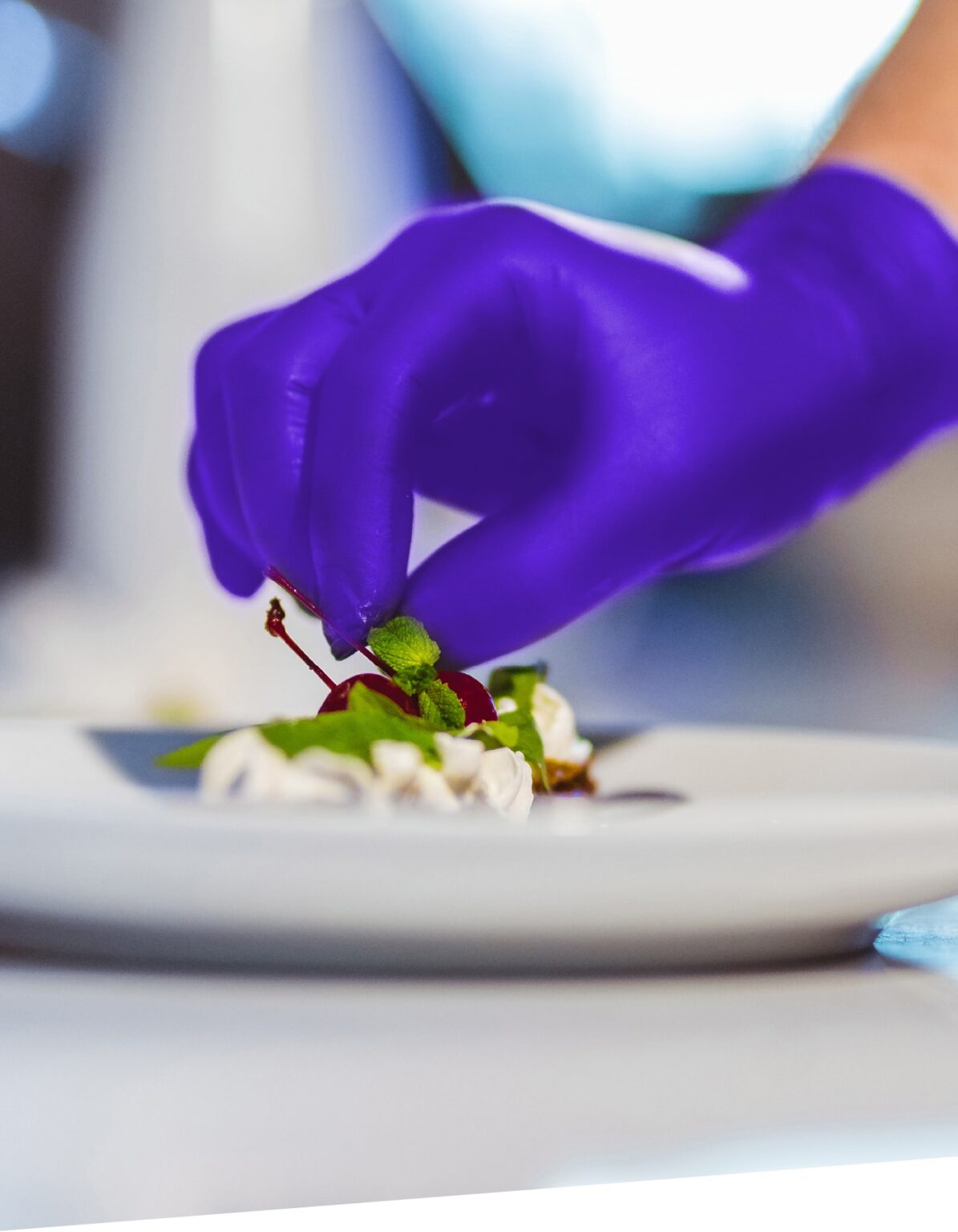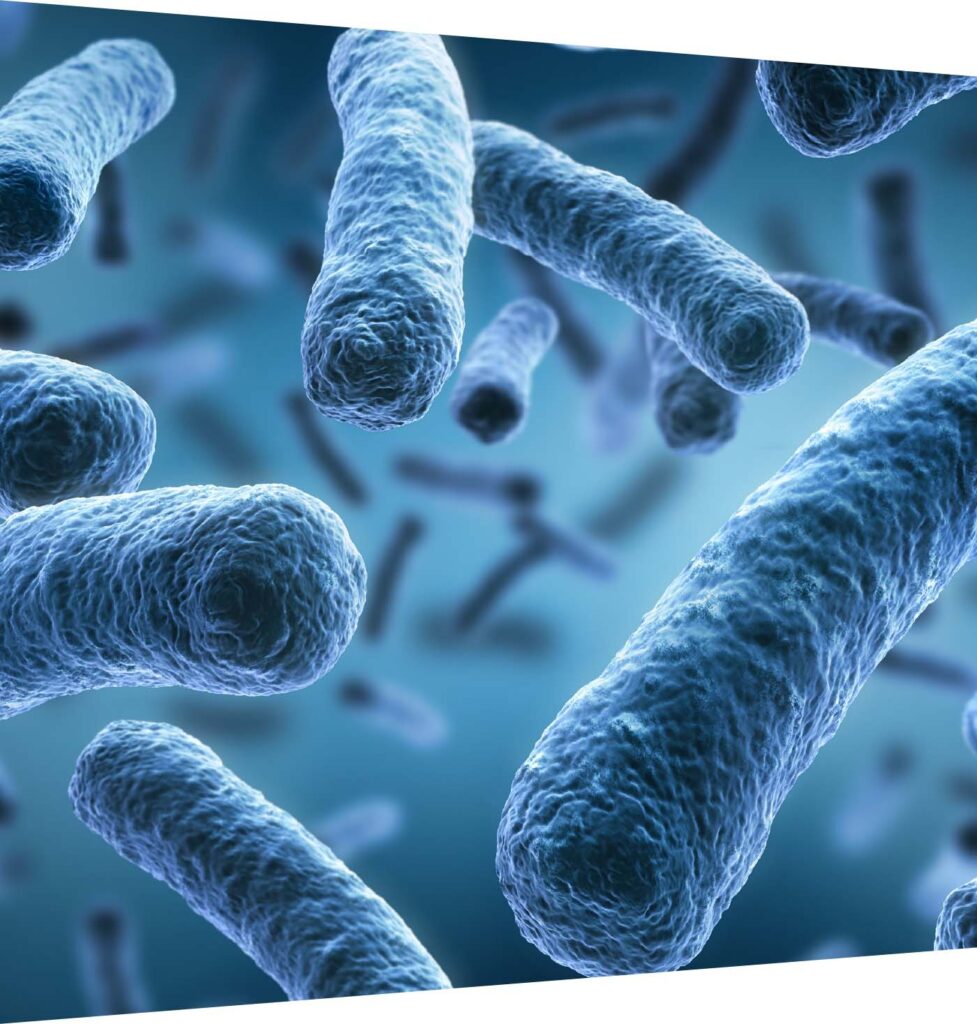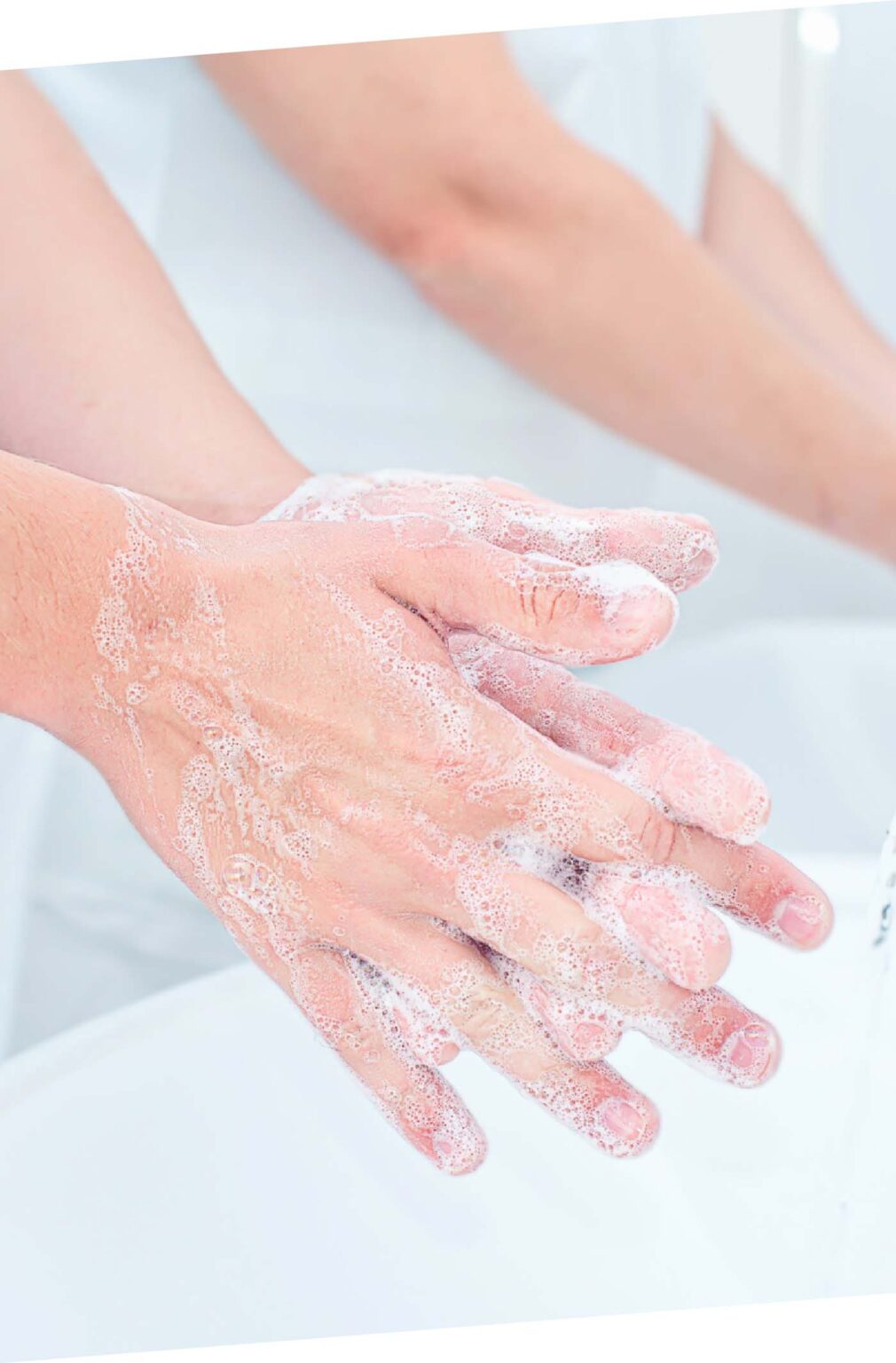Microbiological contamination mediated by hands
Various microorganisms from different sources can be transmitted to food through the hands. From a quantitative point of view, bacteria (such as salmonella, staphylococcus, listeria) are the main responsible for ATA (Foodborne Diseases), but viruses, fungi and parasites (such as the protozoan Giardia lamblia) must also be considered.
Microorganisms from the human body
They can come from any contaminated part of the body, especially the head, hair, ears, nose, mouth, and other excretions. Touching parts of the body before starting work or during the activity, scratching, touching skin lesions, especially infected ones, and boils, blowing your nose, going to the bathroom, are all actions that can cause significant contamination of the hands: microorganisms can also pass through handkerchiefs and toilet paper. Consider the case of plasters applied to wounds on the hands which, if not waterproof and protected, can become a point of accumulation of dirt and a place of bacterial multiplication, as well as constituting a possible "foreign body" (cases of used plasters found in food products have been reported). Do not overlook the act of eating and smoking, which can imply contact between the hands and the mouth. The act of making a phone call may involve contact between the hands and the ears or hair, or simply contamination by repeated contact with the telephone set.

Microorganisms from the internal environment of the plant
Contamination can come from the internal environment, for example from cleaning and waste collection operations, from frequenting places with a lower hygiene standard (cellars, warehouses), from contact with dirty and previously contaminated surfaces, objects and utensils. Also consider the recontamination of hands, when after washing them, sink taps or door handles that have already been touched with dirty hands are touched.
Repeated cleaning or drying of hands on towels or aprons can also be a source of recontamination, since microorganisms survive and multiply on these substrates to return to the hands the next time they are used. Contamination of hands due to handling money is also important: coins and banknotes come from outside and have been touched by many people. A study conducted in the United Kingdom in 2011 highlighted bacterial contamination in 92% of mobile phones: in 16% of cases it was Escherichia coli.
The reason would be the failure or inadequate washing of hands after using the bathroom, with contamination being transmitted.
Microorganisms from other foods
Hands can cause indirect cross-contamination between two or more foods. Touching a dirty or contaminated food (for example, fresh fruit and vegetables, even if not visibly soiled with soil, eggs, poultry, fish, shellfish or similar) and then a cooked food or food ready to be consumed as is, is a very risky practice from a hygiene point of view. This contamination can also be mediated by objects repeatedly touched during work activities.
Prevention
Already from the examination of contaminations, which can find in the hands a means of diffusion and transmission, it is intuitively evident that the solution is in primary prevention, involving the modification of the behavior of the workers and the procedures that the OSA must prepare and implement to guarantee the safety of the food: procedures that are inserted in the more complex system of self-control.

Chemical contamination mediated by hands
Hands can also transmit chemical contaminants to food, although this is usually an occasional occurrence.
Chemical contaminants, depending on their nature and quantity, can cause poisoning or intoxication in the consumer, or more simply give the food bad odors and flavors.
Improperly used cleaning or disinfectant chemicals can leave residues on the hands, which can be transmitted to food. Likewise, substances used for the maintenance of equipment and machinery (lubricants, solvents, etc.) can be transmitted. Nail polish can come off and contaminate food.
General personal hygiene

Nail care
Therefore, the maintenance of long nails, whether natural or artificial, by food sector personnel conflicts with universally recognised principles aimed at ensuring food safety.
Hand washing
Hand washing methods, similar to the so-called "social washing" adopted in the healthcare sector, can be the following: elimination of any obvious dirt using disposable paper wetting the hands with warm water (37°C) soaping with warm water and liquid soap (3-5 ml), rubbing for a long time (at least 30 seconds) in every part: in the palms, on the back, between the fingers, on the wrists possible use of a brush to clean under the nails rinsing thoroughly, always with warm water. The operation can be repeated if the dirt is particularly stubborn, or if it is considered that the contamination, although not accompanied by obvious dirt, was particularly significant and dangerous. Antiseptic washing is almost never necessary in the food sector, but can be carried out in particular cases (according to risk assessment) using antiseptic solutions. A normal wash with antibacterial soap can be carried out with good results.
Use of gloves
The use of disposable gloves does not always solve every hygiene problem. First of all, it should not be a substitute for adequate hand hygiene. Furthermore, the use of gloves must be managed with extreme care. They must be replaced often, in relation to the activities performed and as soon as any cuts or holes are noticed. However, good hand washing is preferable to incorrect use of gloves. The use of gloves is recommended: in the case of particularly risky operations from a hygienic point of view, such as preparing dough for stuffing, minced meat to be consumed raw, etc., also in reference to the destination of the food (school canteens, hospitals, elderly care facilities) in the case of particularly contaminating operations for the hands, such as cleaning or unexpected maintenance, waste removal, contact with dirty materials or objects, handling of high-risk foods (e.g. eggs, poultry, etc.): in this case, gloves prevent contamination of the hands (which would result in future contamination of food) by eliminating the need for demanding decontamination washes in the case of handling food and money, if the two activities are carried out by the same worker in the case of lesions on the hands, which must be treated, covered with medical devices (plasters, gauze) and finally protected with gloves.
Choosing gloves
Disposable rubber latex gloves break easily in the presence of long nails and rings, which however must not be allowed. A little more resistant and less elastic are vinyl gloves, which can be used in case of latex allergy, but should be limited to cleaning operations and not to contact with food, since they contain phthalates. Nitrile gloves are also suitable for people allergic to latex and have an excellent fit, more resistant than latex and vinyl gloves, and are suitable for contact with food. Thicker and more robust latex gloves, for repeated use, can be used for washing and cleaning operations, but not for operations in which a high standard of hygiene and at the same time a good grip capacity must be guaranteed.
Sanctions
The finding by the competent authority of inadequacies (less serious deficiencies than actual non-conformities) in the behavior of personnel, in relation for example to correct washing procedures and more generally to hand hygiene, adequate use of gloves, personnel training, etc., may give rise, pursuant to art. 54 of Regulation (EC) no. 882/2004 and art. 6, paragraph 7, of Legislative Decree no. 193/2007, to a prescription measure, with assignment to the OSA of an appropriate period of compliance.
Only in the event of non-compliance verified after this deadline will the administrative pecuniary sanction of payment of a sum ranging from €1,000.00 to €6,000.00 (reduced amount: €2,000.00) be applied.
Conclusions
As we have seen, great attention to hand hygiene and more generally to personal hygiene is essential, overcoming a state of underestimation by many food workers due to poor or inadequate training. In fact, training should go beyond the simple transmission of notions and pursue the objective of making people fully aware of the hygiene risk associated with the operations performed, modifying the behavior of the workers.



















